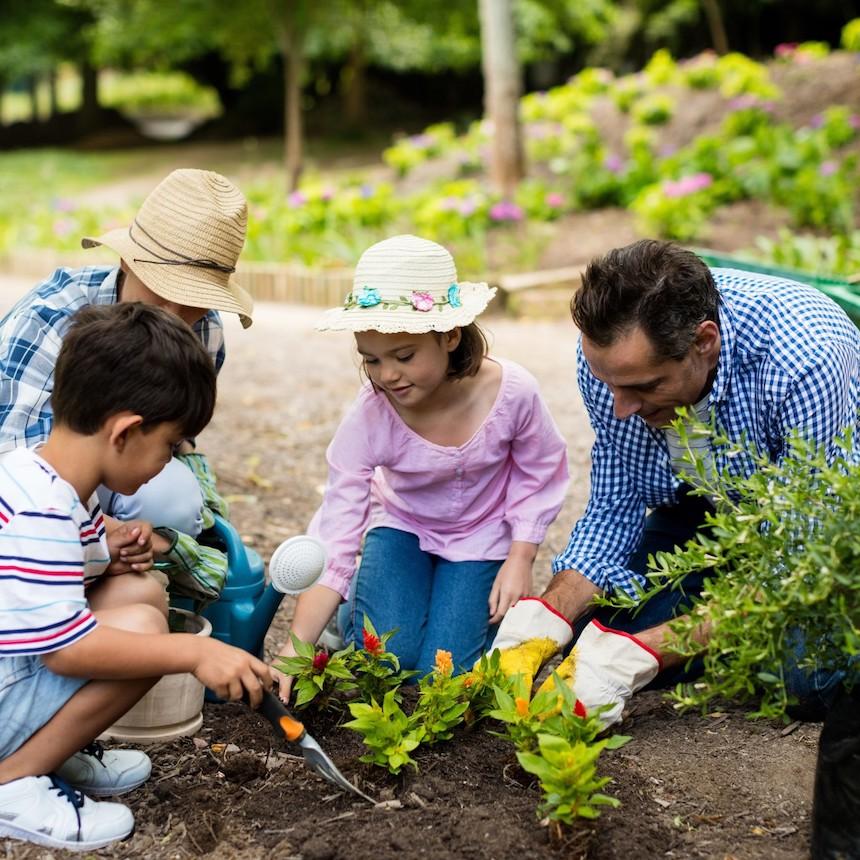Professional Gardening Tips for Producing a Lasting and Eco-Friendly Garden
Starting the journey to create a eco-friendly and sustainable garden includes a series of purposeful choices and techniques that not only enhance the charm of your room however also contribute favorably to the setting. By picking native plants that are fit to your region, you can reduce dependence on chemical plant foods and chemicals while offering crucial assistance to local wildlife. In addition, incorporating water conservation techniques and natural horticulture approaches plays an important function in maintaining a healthy ecosystem. To uncover more professional understandings and functional strategies, allow us discover the crucial elements that define an eco mindful yard.
Select Indigenous Plants
Choosing native plants for your garden is an essential action towards accomplishing sustainability. In addition, native plants normally require less water as soon as established, adding to much more effective water usage.
Beyond their functional benefits, native plants play a vital duty in supporting neighborhood biodiversity. They give important environment and food sources for native wildlife, consisting of pollinators such as bees, birds, and butterflies. This cultivates a balanced community, which is crucial for the wellness of your yard and the surrounding environment.

Implement Water Conservation
Carrying out water conservation strategies is necessary for keeping a lasting garden. Efficient water usage not just decreases the environmental effect yet additionally ensures that plants get sufficient hydration without wastefulness.
On top of that, mulching is a valuable practice for preserving water. By using a layer of natural compost, such as timber chips or straw, around the base of plants, garden enthusiasts can reduce soil dissipation and maintain constant wetness levels. Mulch also helps manage soil temperature and reduces weed development, more adding to plant wellness.
Rainwater harvesting is another sustainable technique. Installing rain barrels or other collection systems permits gardeners to record and store rainwater, which can later on be used during completely dry periods. This not only preserves community water but also supplies an all-natural, chemical-free resource for watering.
Finally, picking drought-tolerant plant species can significantly minimize water needs. These plants are adapted to flourish in low-water problems, making them suitable for environment-friendly gardens. gardening tips. Implementing these water preservation techniques will certainly promote a resistant, lasting yard
Use Organic Gardening Approaches

Pest administration in a natural yard counts on integrated pest administration (IPM) approaches. These include motivating valuable bugs, making use of natural killers like ladybugs and lacewings, and carrying out plant turning to interrupt pest life cycles. Buddy planting, where particular plants are expanded together to fend off insects or bring in helpful bugs, is one more reliable method.
Weed content control is managed through mulching and manual elimination, instead of relying on herbicides. Mulch not just reduces weeds but also conserves dampness and boosts dirt health as it damages down. Organic composts, such as straw, wood chips, and leaves, are especially useful.
Create Wildlife Habitats
Creating wild animals habitats within your garden not just boosts biodiversity yet additionally supports the community's balance. Beginning by integrating native plants, as these are appropriate to your neighborhood environment and give crucial food and sanctuary for wildlife.
Take into consideration adding a water attribute, such as a fish pond or birdbath, to provide a regular water source. Water elements attract a variety of varieties, from amphibians to pollinators, boosting the garden's vitality. In addition, mounting birdhouses, bat boxes, and insect hotels provides risk-free nesting websites and urges biodiversity.
Leave some locations of your yard undisturbed, allowing leaf clutter and dropped branches to gather. By prioritizing these lasting practices, your garden can become a sanctuary for neighborhood wild animals, promoting eco-friendly health and sustainability.
Method Composting and Mulching
An essential element of lasting gardening, composting and mulching, substantially boosts dirt wellness and lowers waste. Unlike artificial fertilizers, garden compost improves the dirt with valuable microorganisms and essential nutrients, promoting a healthier garden ecosystem.
Mulching, on the other hand, includes covering the dirt surface area with natural or not natural products, such as straw, wood chips, or shredded leaves. This technique offers a number of benefits: it saves dirt moisture, suppresses weed growth, and moderates dirt temperature level. Compost also slowly breaks down, adding natural matter to the dirt and additional improving its fertility.
To practice efficient composting, ensure your garden compost pile has a balance of environment-friendly products (abundant in nitrogen) and brown products (rich in carbon), preserving ample aeration and moisture. gardening tips. Consistently turning the heap speeds up decay. For mulching, apply a 2-3 inch layer around plants, guaranteeing it does not straight get in touch with stems or trunks to protect against rot
Conclusion

Choosing native plants for your yard is a fundamental action toward accomplishing sustainability.Additionally, incorporating indigenous plants can improve the aesthetic charm blog here of your garden. These plants are adjusted to thrive in low-water problems, making them ideal for green yards. Executing these water preservation approaches will certainly foster a resistant, sustainable garden.
In verdict, establishing a environmentally friendly and lasting garden entails the strategic option of indigenous plants, the fostering of water preservation techniques, and the application of natural gardening techniques.